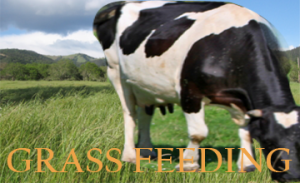Is Grass-Fed Beef More Delicious?
Lowell Novy, while enjoying a steak can tell whether the cattle that it comes from were fattened with corn or grass & hay. Further if he decided it is not corn and that the animal has fed on grass all its life, he can also identify the varieties of grass that was fed.
Hmmm? Surprising? Well you shouldn’t be. Raised on a cattle ranch in western Kansas, Lowell Novy is a veterinarian, practicing in Simi Valley and his words are backed by over 70 years in the field, literally raising cattle. He and his several associates together run a renowned Veterinary Clinic in Simi Valley. Nevertheless he manages half of his time and carries out experimenting with ranching practices with a team to assist him with his cattle.
Feeding Of Animal on Varieties of Grass
The practice of slaughtering by most in the beef industry is usually preceded by a 4 month fattening procedure that feeds the cattle with corn. According to Novy, animal fed on varieties of grass and hay is found more tasteful than ones on corn. This is good for overall health of the cattle, good for land and better in taste. During and after WW II, the practice of feeding the livestock with concentrated carbohydrates diet of corn and other grains had gained ground for fattening them up prior to slaughtering. The fattening process would last for around 140 days. This would result in each animal gaining up to 5 pounds a day. This had obviously been a standard assuring efficiency, economy and profitability in the area of beef production. In the frenzy, we received the side effects in the form of obesity, diabetes, cancer and heart disease. Novy realized this early and diverted administration of additives, growth hormones, antibiotics etc. as a corrective measure and instead introduced all Grass and hay into their diet.
Taste Bud Of Beef
Not surprising, with well-done, thick, juicy steak in their mouths, public has begun considering the source to be coming from a higher-quality specialty product, largely because of improved breeding through genetics that promising them more vitamins, particularly omega-3 healthful fatty acids. They acknowledge that it is light and easier to digest, like fish, unlike the usual issues caused by red meat.
Like wine and tea, the veterinarian speculates that the day is not far that even beef will be subjected to “beef tasting”.
Slaughterhouse Of Cattle
However the grass fed beef makes up as little as 5% of the entire beef sales in the US. It is not difficult to understand that producing such cattle turns out much more costly, with their weight gain being limited to less than 2 pounds each day. Novy has to take care that his product does not get mixed with other ranch products and consequently lose its uniqueness. His team accompanies the cattle to the slaughterhouse ensuring they are not harmed. He does not buy cattle; he has worked very hard and very long; using a strict genetic profile he breeds them – each one of the 400 odd head that he sells each year are conceived, born and raised entirely on the ranch – thus getting the superior product on the table. Nevertheless the 5% supplying better tasting steaks on the tables are people more passionate on the quality and health of the public in general than the profitability.
It is not difficult to understand the California Cattlemen’s Association and California Beef Council not being prepared to favor one production method from another. Its members include all types – grain-fed, grass-fed, organic and “natural” beef. According to it, there has been little research that could stand up in ovation for the grass fed beef and the differences are insignificant even as acknowledging that grass fed beef might be rich with good fatty acid.
There are restaurants that specialize in local food products and these make extra efforts educating the patrons on the grass fed beef, and most of them are awed by the facts presented. Such restaurateurs share the same passion as Novy’s and are partners in developing a new, healthier gastronomic culture. Seeing the encouraging signs, Novy plans to double his production and the restaurateurs are anxious to lap it all. After all it takes two to tango!

Recent Comments